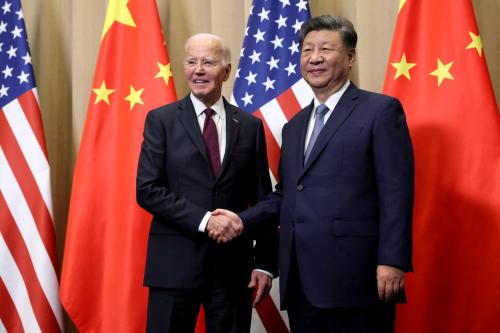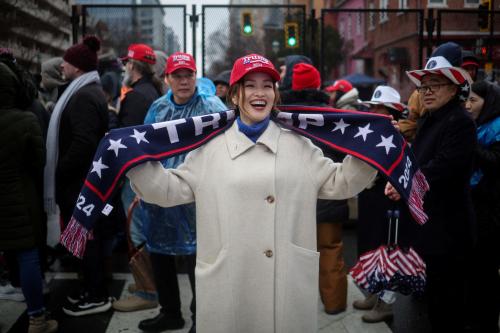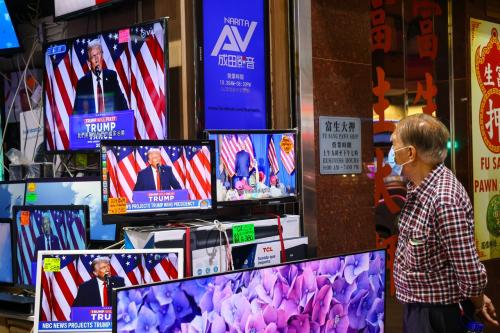Few words are more frequently mentioned in the context of China’s economic reform agenda than “rebalancing”. What will a rebalanced Chinese economy look like? Has the Chinese leadership come to grips with sources of resistance to change? What is the likely balance and sequencing of local government, banking, exchange rate, and environmental and judicial reform?
Two leading analysts of China’s economic and political leadership, Professor David Daokui Li of Tsinghua University and Dr. Cheng Li of the Brookings Institution, discuss these issues with Malan Rietveld, director of Investec Asset Management’s Investment Institute.
Malan Rietveld (MR): Many people have discussed China’s economic rebalancing without defining what a rebalanced Chinese economy would look like. How do you understand rebalancing?
Prof. David Daokui Li (DDL): The most important challenge is to find new engines of growth, rather than depending on the old growth engines of property development and exports. The emergence of new growth engines will lead the country through an extended period of rebalancing and ensure that growth is maintained. The structural transformation involves increased private consumption and a lower trade surplus. There is some evidence that structural shifts are already taking place. According to my research, private consumption is now about 46% of GDP, compared to 38% in 2007. Disposable income is also increasing, up from 42% of GDP in 2007, to around 50% of GDP today. The trade surplus has also trended lower from 8.8% of GDP in 2007 to 2.5% at the end of 2013. Even with the increase in trade surplus in 2014 to 3.8% of GDP – which was largely due to the lower cost of imports from lower commodity prices – it is still far below the 2007 level. Adjusting for the impact of lower commodity prices, the trade surplus is very likely to have been lower than the 2013 level.
Dr. Cheng Li (CL): China’s economic rebalancing can be viewed in terms of global trade balances and domestic dynamics. From a US-China rebalancing standpoint, China is intending to save less and spend more on consumption, while the US is spending less and saving more. Domestically, as David mentioned, China’s rebalancing requires economic restructuring. The previous model consisted of export-led growth, cheap labour and little emphasis on the environmental and ecological costs of growth. There is no question that the old model is coming to an end. The new model is focused on improving innovation, services and a larger consumption component. But this model is still in its infancy and its realisation will be gradual.
MR: There are various excesses arising from the old economic model — an oversupply of residential property, likely bad loans with the municipal governments and the state-owned banks, some overcapacity in the basic industrial sectors (steel and cement) — which need to be absorbed, or dealt with more directly. Which of these excesses can be dissolved with growth and which will need more direct central government action to clean up?
DDL: The surplus production capacity in the steel and cement sectors will probably be resolved without substantial government intervention. Prices have been very low, which, in time, will create pressure for producers to exit. These areas are not a major cause for concern. The most important direct intervention is the proactive promotion of much higher environmental standards in these sectors. The issues around non-performing loans and excessive local government debt require more attention than surplus production. They are an outcome of inappropriate local government behaviour and can, therefore, only be fundamentally addressed by central government intervention and other institutional reforms. There are many things to work on at the local level. The central government needs to impose discipline on local governments, to prevent borrowing for bad projects, and to establish channels for local infrastructure projects to be properly financed.
CL: In recent decades, China’s rapidly growing middle class lacked sophisticated investment options through which to channel their savings, given the underdevelopment of China’s financial markets. With such a lack of choice, real estate generally provided the best investment option. This lack of financial sophistication resulted in a number of problems: the accumulation of local debt, a sizeable shadow banking sector and overcapacity in certain sectors, notably property. The current leadership clearly understands the need for multi-faceted and complex reforms, but financial and banking reform will be very important. The new administration, under President Xi Jinping, is very clear on its plans to deliver focused financial reforms. I would emphasise the role of the free-trade zone in Shanghai – and, increasingly, other Chinese cities – in this. The banking system, in particular, will experience fundamental change, with online and private banking playing a more important role. The administration is also promoting greater extension of loans to small- and medium-sized enterprises, as well as the growth of targeted services, such as healthcare, education, logistics, entertainment and tourism. These reforms are showing early signs of success. In the last two years alone, over a million jobs have been created in the private service sector. If this trend continues, unemployment tensions in urban areas should reduce, further supporting the government’s aim of increased urbanisation along with economic reform.
MR: Do vested interests remain a challenge in realising a rebalancing of growth, or has President Xi overcome this source of opposition to change?
DDL: Vested political interests are not as relevant in China as they used to be. The new leadership under President Xi is extremely powerful – more powerful than most leaders in recent memory – and the attention now falls firmly on the political will of the new leadership to push for reform. My view is that this is likely to be strong, as reform, economic rebalancing and sustainability of economic growth is viewed by the leadership as critical to the health of the Communist Party and the regime. Therefore, short-term economic performance is, relatively speaking, not as important as it used to be. There is less emphasis on providing incentives for local governments to simply deliver short-term economic gains. But if insufficient incentives are put in place for local officials to search for new engines of growth, then this can also create new risks. Local governments are not working hard enough to look for new growth sectors. The main concern from the top is that local governments are corrupt and this corruption is causing public discontent. China needs to reward leaders who are able to promote new growth engines. Economic growth and local government policies are very much intertwined. Over the past three decades, local government policies have been very much pro-growth, with a relatively short horizon and the use of the old economic engines. As these policies change, slower growth can accentuate economic risks.
CL: The most significant vested interest groups lie in the state-owned enterprises (SOEs), which are resistant to change, having benefited in various ways from the old economic model. The new leadership is firm on tackling these vested interests and major changes are being seen in SOEs. President Xi’s determination to realise a rebalanced growth model, in spite of vested interests, is evident in the anti-corruption campaign and the big clean-outs that have taken place in SOEs – in the railway, oil, telecommunications and power sectors. A second source of resistance to change is from local governments. Tensions between President Xi and local leaders have heightened lately, due to central government enforcing policies without local government consent. President Xi has publically decried the previous administration’s inaction, with respect to local- government reform.
MR: Cheng, governance reform, broadly speaking, has been a major area of emphasis in the reform agenda and rhetoric of the leadership since President Xi took power. The anti-corruption efforts are a key part of this, but there is also talk of changes to the judicial system and even a greater emphasis on the rule of law. Yet, at the same time, a consensus has emerged that President Xi may have more effectively centralised power than any Chinese leader since Mao. To Western ears, this sounds like a possible contradiction: planting the seeds for an independent judiciary, greater separation of powers and the rule of law — while at the same time centralising power around the presidency. Is there a tension here or do we need a completely different mind-set when considering political and institutional reform in China?
CL: This is the defining question on the path to political reform in China under President Xi and beyond. It is very important to really understand the relationship between the anti-corruption measures and the deeper and longer-term process of judicial, political and institutional reform. There is no doubt that the government is serious about addressing the rising prevalence and magnitude of corruption. The Communist Party realises that corruption is a threat to its own long-term viability. However, let us be clear: the campaign is really being run under the old way of doing things, rather than as a modern, legal process. Wang Qishan, the new ‘corruption tsar’, has explicitly described this as a treatment of the symptoms rather than the root cause. The leadership believes that by launching this anti-corruption campaign, they can buy time to implement more deep-rooted reforms. In my mind, this is a very fair and sensible argument about the timing and sequencing of reforms. What it also does, for the first time, is put these deep-rooted reforms on the agenda, albeit for the future. No country can achieve a transition to the rule of law in two years. In the US, it took several decades; and before that, in Britain, it took centuries. But I have no doubt that deep and fundamental legal reform – much of which is based on Western systems – is on the agenda. You can see it in the rising power of district courts, above the municipal level, which is a very Western concept. You can see it in rise of the legal profession in China – the country’s law schools are booming, as is the trend of Western-educated lawyers returning to China after their overseas studies. In 1998, President Bill Clinton told the Chinese leadership: “You have too many engineers; we [the US] have too many lawyers – let’s trade!” But that imbalance is being addressed by the rise of the legal profession in China, which is an essential precursor of judicial reform and the rise of the rule of law.
MR: What is Beijing’s view on harnessing the internationalisation of the renminbi for economic and geopolitical gains?
DDL: The internationalisation of the renminbi is not a high priority on the policy agenda. There are other higher-priority financial reforms, such as liberalising interest rates and enhancing the role of the bond and equity markets in financing enterprise investments, rather than relying on the banking sector. As these changes happen, maintaining financial stability will be extremely important. The internationalisation of the renminbi is seen as a consequence, rather than a goal, of government policy. For example, the agreements signed in recent years, with the authorities in London, Frankfurt, Paris, Singapore, Luxembourg and Sydney, to create clearing houses for the renminbi were, in fact, proposed and pushed by foreign governments and agreed to by Beijing, to gain a bargaining chip to achieve concessions in other areas.
CL: Two important areas of policy are: firstly, the establishment of a modern version of the Silk Road – to increase interaction with neighbouring countries and ultimately the Middle East, Eastern Europe and North Africa; and secondly, the increased focus on international infrastructure, most obviously through the Asian Infrastructure Investment Bank. These developments hold tremendous opportunities for achieving long term, strategic geopolitical gains for China. I see these types of initiatives as the main way in which Beijing will look to expand the use of the renminbi as part of a much broader strategic process.
MR: What about the actual mechanics of the exchange-rate regime? Will we see an effective opening of the capital account and more freely floating renminbi?
DDL: Barring major shock to the financial markets, the exchange rate and capital account will become increasingly market based. This is clearly the policy intention that was established five years ago. As the capital account is fully liberalised and the currency regime is market based, the government will only intervene in an emergency to control extreme volatility in the exchange rate. The government is very clear and upfront concerning the reforms, but it is likely to be a gradual process as it requires simultaneous and coordinated reforms on a variety of other fronts.
CL: David is absolutely right. The short answer is “yes”. But exchange- and interest-rate liberalisation is a risky process, given the level of development of the Chinese financial sector. As there are various reforms occurring simultaneously, the government will closely monitor progress on each, with the end goal of full capital account liberalisation still being quite some time away. Even though the roadmap has been laid out, the government is cognizant that reforms can have serious financial and economic implications if implemented too quickly.
MR: David, when will direct foreign investment be permitted in the Chinese bond market? As a halfway measure, do you expect the Hong Kong/Shanghai/ Shenzhen Connect programme to be expanded from equities, to include bonds, later in 2015?
DDL: The next step will be for the Shenzhen Stock Exchange to be linked with the Hong Kong Stock Exchange, after which more shares will be allowed to join the programme. There are currently about 500 stocks included, and linking the Shenzhen Stock Exchange and mainland shares will influence both the diversity and depth of stock selection. The local bond market is not well enough established to allow similar foreign participation, so the first stage would be to better nurture the local bond markets to increase transaction volumes, enterprise listings and liquidity. After this, it would be beneficial for these markets to be linked up.
MR: As you both alluded to earlier, there is a very clear sense that the government is feeling the pressure to do more to curb pollution in all its various forms. What form will Beijing’s interventions take on pollution and environmental issues?
DDL: The government has adopted a dual approach towards mitigating the effects of pollution on the environment, built around what I would call major and minor interventions. The minor steps are already being taken, which include encouraging more electric-powered cars and allowing electric cars to be driven seven days a week (compared with six days for normal cars). Some of the major steps we should expect in the future are very strict new standards for high polluting production facilities in the cement, iron and steel sectors. The government is also looking at how to introduce subsidies for investments into super-modern production facilities in the coastal regions, drawing, in particular, on German and Japanese technologies to replace older, higher-polluting ones. If this can be done in major cities, air quality will improve dramatically in less than five years.
CL: The documentary, Under the Dome, which has been watched by over 200 million people in China, is illustrative of how pollution has become not only an environmental concern, but also a potential risk to political, economic and social stability. It is in the government’s best interest to deal with this seriously. There has been a conscious shift by the leadership from just focusing on GDP growth, towards ensuring a greater quality of growth, which takes into consideration other important developmental aspects that are associated with a greater quality of living. Pollution and the environment are critical in this regard.
MR: Will there be any residual aspects of the one-child policy still in operation by 2020?
DDL: I am confident that by 2020 all elements of the onechild policy will effectively be gone. In fact, I would not be surprised if some incentive programmes might be put in place to encourage child bearing.
CL: This has become one of the least controversial areas for reform in China today. People understand that the policy is increasingly ineffective in the context of rising urban-rural migration in China. More fundamentally, China now confronts the challenges of an ageing population, resulting in a shortage rather than an oversupply of labour. We have already seen a general relaxation of how the one-child policy is implemented. But again, I would expect the policy changes to continue to be gradual, as the leadership is wary of unintended consequences. Remember that policies introduced by Mao in the 1950s and early 1960s to promote fertility had all kinds of unexpected consequences, and, in many ways, the so-called one-child policy emerged in reaction to those earlier policies to promote fertility and increase the labour supply. So it is quite understandable that the leadership is taking a cautious approach to changing these policies and monitoring the demographic change in the country very carefully. But ultimately, I think they will reach an agreement to abolish the policy.
This interview will appear in the annual journal of the Investment Institute at Investec Asset Management entitled, “The Evolution of China’s Capital Markets”, forthcoming September 2015.
The Brookings Institution is committed to quality, independence, and impact.
We are supported by a diverse array of funders. In line with our values and policies, each Brookings publication represents the sole views of its author(s).



Commentary
The big picture: Debating China’s rebalancing
August 5, 2015